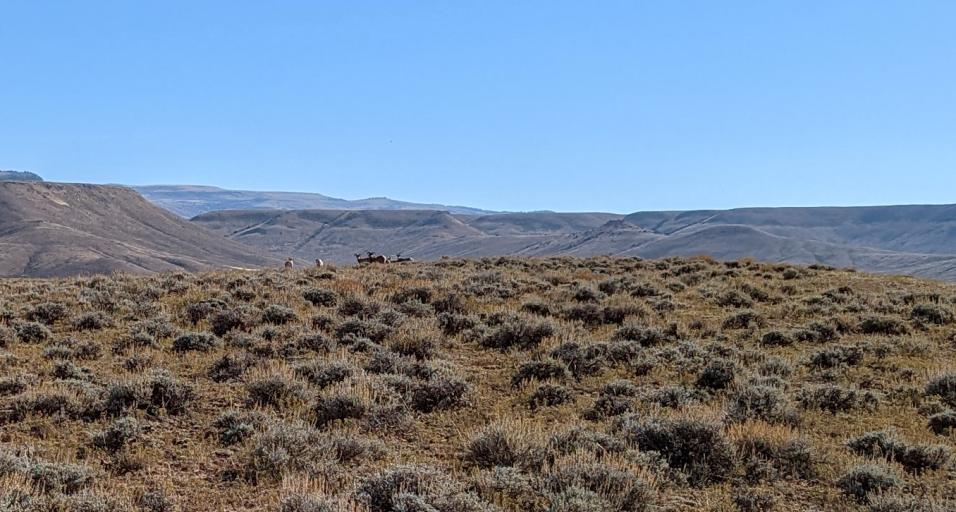The Wyoming Game and Fish Department has documented a disease outbreak in the Devil's Canyon bighorn sheep herd northeast of Lovell.
“Since Oct. 14, Game and Fish has documented 37 bighorn sheep mortalities in the Devil’s Canyon herd, which constitutes approximately 10 percent of the population,” said Corey Class, wildlife management coordinator for the Cody Region. “The majority of deaths have occurred in ewes and lambs.”
Game and Fish was first alerted of the dieoff by a report from a landowner and a mortality signal from a GPS collared bighorn sheep in the herd.
“We have been working closely with a local landowner who has been key to managing and monitoring this disease outbreak,” Class said. “We greatly appreciate their assistance and cooperation.”
On Oct. 16, Game and Fish collected biological samples including nasal and tonsil swabs and tissue from bighorn sheep carcasses at the site.
The samples were sent to the Game and Fish Wildlife Health Laboratory in Laramie for analysis where a pathogenic strain of the bacteria Mannheimia haemolytica was cultured. This strain type is known to cause lethal pneumonia in sheep. The source of the infection is unknown.
Game and Fish is actively monitoring the population and any potential spread of pneumonia. Currently, 24 bighorn sheep in this herd are fitted with GPS tracking collars to monitor distribution, habitat use, seasonal movement, annual recruitment and survival rates.
“The collars will now help us monitor bighorn sheep populations from a disease perspective and document additional mortalities,” Class said.
All bighorn sheep carcasses are being disposed of to decrease spread of the disease.
“Our limited experience with this pathogen gives us some hope the outbreak will run its course quickly, with minimal mortalities,” said Hank Edwards, Wildlife Health Laboratory supervisor.
The Devil's Canyon bighorn sheep herd (Hunt Area 12) is located in the northwest portion of the Bighorn Mountains. This population is estimated at 250-300 individuals.
Devil’s Canyon bighorn sheep herd experiencing disease outbreak
Corey Class 307-527-7125



